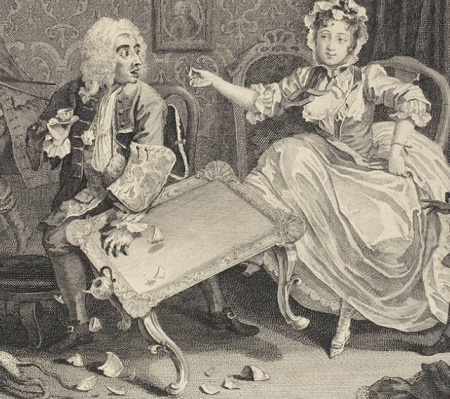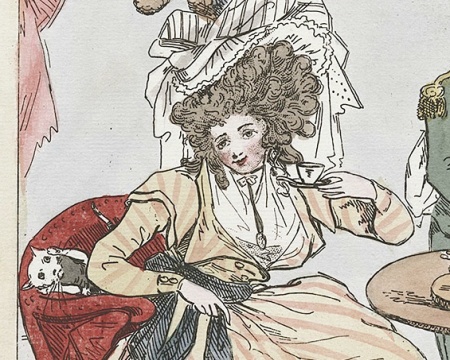In eighteenth-century England, there were many reasons why families might have been torn apart, or why dutiful wives and hardworking husbands could suffer a fall from grace. Heart-rending tales of orphaned children, abandoned lovers and destitution fill the pages of contemporary newspaper columns and court records. For some, one of the prime suspects behind the nation’s idleness and debauchery was quietly, steadily taking root in almost every street in the country.
This terrible foreign invader encouraged young men to stay “a lurking in the bed” rather than earning an honest wage. It turned women to harlotry and insolence, caused atrocious child neglect, and was armed to carry everyone off to their grave a decade early. This enemy of virtue? Why, tea, of course.
The philanthropist Jonas Hanway lamented that “Men seem to have lost their stature, and comliness; and women their beauty. Your very chambermaids have lost their bloom, I suppose by sipping tea.” But social reformer William Cobbett’s fevered rant about the moral and national implications of tea-drinking was even more vehement (emphasis my own):
“Tea drinking fills the public house, makes the frequenting of it habitual, corrupts boys as soon as they are able to move from home, and does little less for the girls, to whom the gossip of the tea table is no bad preparatory school for the brothel… the girl that has been brought up merely to boil the tea kettle, and assist in the gossip inseparable from the practice, is a mere consumer of food, a pest to her employer, and a curse to her husband, if any man be so unfortunate as to fix his affections upon her.“
In short, Cobbett viewed the plant ”as a destroyer of health, an enfeebler of the frame, an engenderer of effeminacy and laziness, a debaucher of youth and a maker of misery for old age.”
And the solution to this terrible moral poison? Every household brewing its own “good and wholesome Beer.” Obviously.
Image (top): Detail from plate 2 of Hogarth’s ‘The Harlot’s Progress’ (1732)
Image (bottom): Detail from ‘The Girl in Stile’ by H. Kingsbury (1787)
Image (bottom): Detail from ‘The Girl in Stile’ by H. Kingsbury (1787)




No comments:
Post a Comment